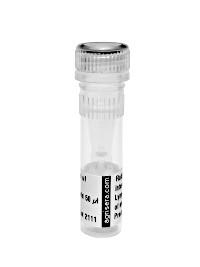1

Anti-PGL35 | Plastoglobulin 35; FIB1a; FBN1a
AS06 116 | Clonality: Polyclonal | Host: Rabbit | Reactivity: Arabidopsis thaliana, Citrus reticulata, Gossypium histrutum
Compartment marker of chloroplast plastoglobules
Replaced by AS23 4922
- Product Info
-
Immunogen: Recombinant Arabidopsis thaliana PGL35 protein O81439, At4g04020
Host: Rabbit Clonality: Polyclonal Purity: Serum Format: Lyophilized Quantity: 200 µl Reconstitution: For reconstitution add 200 µl of sterile water Storage: Store lyophilized/reconstituted at -20°C; once reconstituted make aliquots to avoid repeated freeze-thaw cycles. Please remember to spin the tubes briefly prior to opening them to avoid any losses that might occur from material adhering to the cap or sides of the tube. Tested applications: Immunocytochemistry (ICC), Western blot (WB) Recommended dilution: 1 : 20 (IC), 1 : 1000-1 : 3000 (WB) Expected | apparent MW: 35 kDa
- Reactivity
-
Confirmed reactivity: Arabidopsis thaliana, Citrus reticulata, Gossypium hirsutum cv. Deltapine 90 Predicted reactivity: Brassica napus, Brassica campestris, Capsicum annum, Hordeum vulgare
Species of your interest not listed? Contact usNot reactive in: Chlamydomonas reinhardtii, Pheodactylum tricornutum, Pisum sativum
- Additional Information
-
Additional information: Cellular [compartment marker] of chloroplast plastoglobules.
For IC samples were embedded in Lowicryl HM20 and sectioned into 100-nm-thick sections and placed on Formvar-coated gold slot grids. The sections were blocked for 20 min with a 5% (w/v) solution of nonfat milk in TBS plus 0.1%Tween 20 (TBST). Anti-PGL antibodies were diluted 1:20 in a solution of 2.5% nonfat milk in TBST at room temperature for 1 h. The sections were rinsed in a stream of TBS plus 0.5% Tween 20 and then transferred to the secondary antibody (anti-rabbit IgG 1:20 in TBST) conjugated to 10-nm gold particles for 1 h. images of localization can be found in Austin et al. (2006).Additional information (application): AtPGL35 is highly similar to Pisum sativum PG1
- Background
-
Background: Plastoglobules are lipoprotein particles which can be found in chloroplasts. They are generally believed to have a function of lipid storage. Recent data suggest that plastoglobules can be also metabolically active, taking part in tocopherol synthesis and likely other pathways. Immunogen: Alternative name AtPap1, fibrillin-1, probable plastid-lipid-associated protein 1.
- Product Citations
-
Selected references: (2021). Autophagy is required for lipid homeostasis during dark-induced senescence.Plant Physiology, 2021;, kiaa120
Luo et al. (2015). Distinct carotenoid and flavonoid accumulation in a spontaneous mutant of Ponkan (Citrus reticulata Blanco) results in yellowish fruit and enhanced postharvest resistance. J Agric Food Chem. 2015 Sep 2.
Gámez-Arjona et al. (2014). Starch synthase 4 is located in the thylakoid membrane and interacts with plastoglobule-associated proteins in Arabidopsis. Plant J. 2014 Oct;80(2):305-16. doi: 10.1111/tpj.12633. - Protocols
-
Agrisera Western Blot protocol and video tutorials
Protocols to work with plant and algal protein extracts - Reviews:
-
Chiung-Chih, Chu | 2012-04-24The antidody is specifically recognized a ~30 kDa protein in Arabidopsis chloroplasts but not in pea (20 micrograms of protein). The dilution factor for PGL35 is 1:2000 and for 2nd Ab is 1:50000 (by ECL).
Accessories

AS05 084 | Clonality: Polyclonal | Host: Rabbit | Reactivity: [global antibody] for higher plants, algae, liverwort, cyanobacteria, diatoms | cellular [compartment marker] of thylakoid membrane
Benefits of using this antibody


